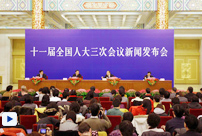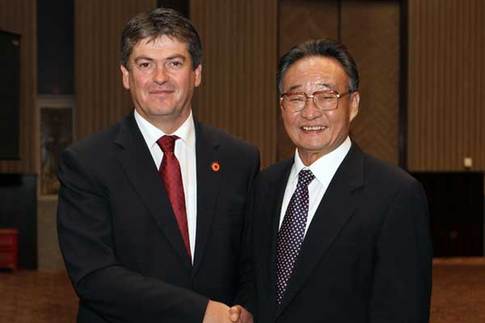Textile and garment companies need to be more innovative in design, Chinese lawmakers and industrial leaders have suggested, as the country faces continued competition from Asian neighbors with lower labor costs, such as India and Cambodia.
Gianni Zhang, president of Hwa Yi Fashion Group, said the old business model that focused on the manufacturing, but ignored design and brand building, no longer works.
China's garment industry saw its slowest growth in a decade in 2012, according to data released by the China National Commerce Information Central.
Garment sales volume at 100 major retailers increased by 2 percent year-on-year in 2012, 2.9 percentage points slower than the previous year.
Sales values rose by 12.3 percent year-on-year, 8.1 percentage points lower than 2011.
Profits at Metersbonwe Group, which is marketed as Meters/bonwe, China's leading casualwear apparel company, dropped 38 percent year-on-year in 2012, according to its yearly performance report.
Shenzhen-listed Zhejiang Semir Garment, one of China's largest home-grown fashion retailers, saw a year-on-year drop of 39.9 percent in profits.
Sun Huaibin, deputy general secretary of the China National Textile and Apparel Council, said the Chinese garment industry experienced a tough year in 2012, which he attributed to weak international demand, the price gap between domestic and foreign cotton, and rising costs.
Sun added that he does not consider China's textile industry in its current form as a low-end sector as a lot of sophisticated technology has been introduced to the industry as well as new designs.
He said he believes the industry will face a better environment in 2013, driven by improved demand at home.
"I have high hopes for China's textile industry, and its fortunes will gradually improve as the country's economic emphasis continues to shift from export to domestic consumption," said Sun.
His view was echoed by Zhang Xiaoji, director-general of foreign economic relations at the Development Research Center of the State Council.
"Some view the textile industry as a sunset industry, but it still has a huge amount of development potential," said Zhang, also a member of the National Committee of the Chinese People's Political Consultative Conference.
Gianni Zhang, also a deputy to the National People's Congress, said he is confident Chinese textiles have a place in the overseas market.
His company has already opened branches in Macao and is planning to expand to Southeast Asian nations such as Singapore and Thailand.
Its sales volume saw a 15 percent growth in 2012.
Marjorie Yang, chairwoman of the board of directors of Hong Kong-based Esquel Group, a world-leading producer of premium cotton shirts, said if Chinese clothing companies are successful in improving on quality and design, the tough environment can be turned into an opportunity as they can expand their market share while others are shrinking.
Esquel has been involved with the Chinese Academy of Sciences on the research into new dyestuff, said Yang, predicting that those companies which focus on production will see a drop in sales.
Zhang Xiaoji said one crucial advantage China has over its Asian textile rivals is its highly developed industrial chain as well as the investment made in the latest production technologies.
"We are getting closer to US and European levels," he added.





